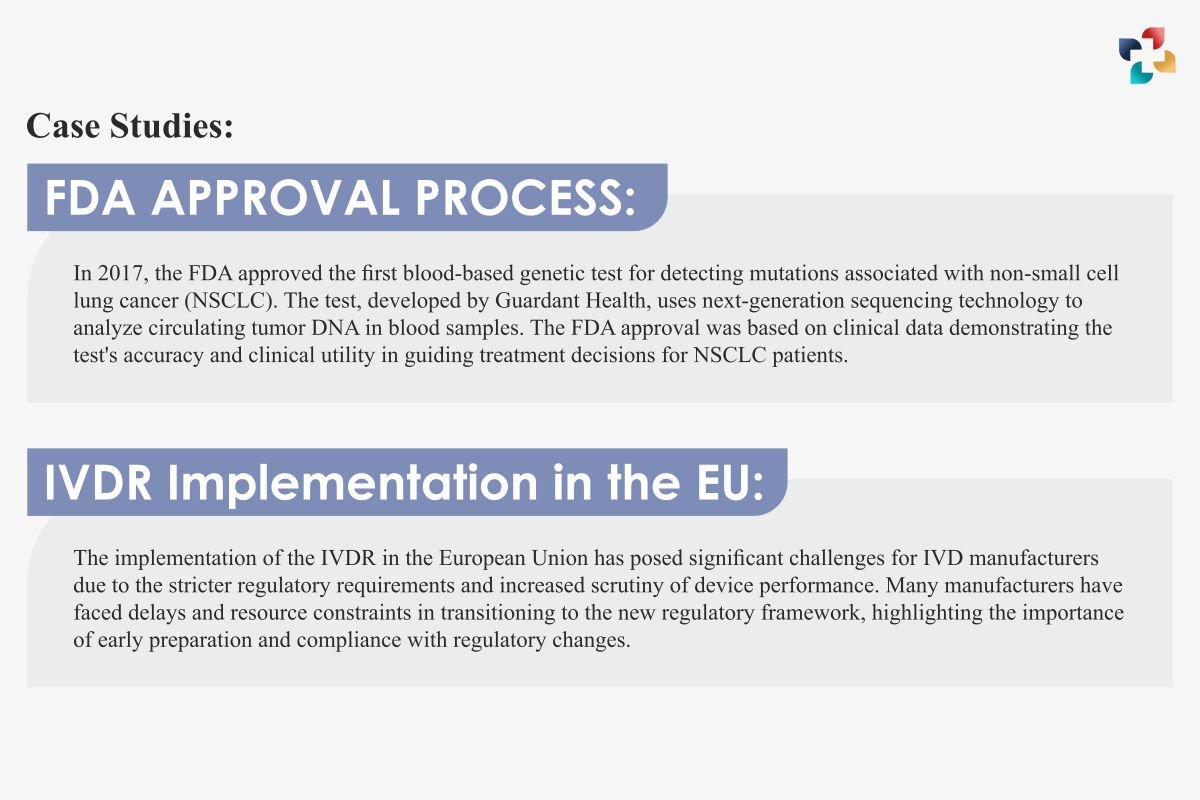In vitro diagnostic (IVD) devices play a crucial role in modern healthcare by aiding in the accurate and timely diagnosis of diseases. However, ensuring the safety, effectiveness, and quality of these devices requires navigating a complex regulatory landscape governed by various regulatory authorities worldwide. This article explores the regulatory landscape of in vitro diagnostic devices, the key challenges and considerations for manufacturers, and the importance of compliance in ensuring patient safety and public health.
Understanding Regulatory Frameworks:
The regulatory landscape of in vitro diagnostic devices varies significantly across different countries and regions, with each jurisdiction having its own set of regulations, requirements, and approval processes. In the United States, the Food and Drug Administration (FDA) regulates IVD devices under the framework of the Federal Food, Drug, and Cosmetic Act (FD&C Act) and the Medical Device Amendments of 1976. The FDA classifies IVD devices into different risk categories (Class I, II, or III) based on their intended use and potential risk to patients.
Similarly, the European Union (EU) has established the In Vitro Diagnostic Medical Devices Regulation (IVDR), which governs the marketing and distribution of IVD devices within the EU member states. The IVDR imposes stringent requirements for the clinical performance evaluation, conformity assessment, and post-market surveillance of IVD devices, aiming to ensure their safety and performance.
In addition to the United States and the European Union, other countries and regions around the world have their own regulatory frameworks for in vitro diagnostic (IVD) devices. For example, in Canada, Health Canada oversees the regulatory landscape of in vitro diagnostic devices under the Medical Devices Regulations (MDR) and the Food and Drugs Act. Similar to the FDA, Health Canada classifies IVD devices into risk categories based on their intended use and potential risk to patients.
In Australia, the Therapeutic Goods Administration (TGA) regulates IVD devices under the Therapeutic Goods Act 1989 and the Therapeutic Goods (Medical Devices) Regulations 2002. The TGA employs a risk-based classification system for IVD devices, ranging from Class I (low risk) to Class IV (high risk), with corresponding regulatory requirements.
In Japan, the Pharmaceuticals and Medical Devices Agency (PMDA) oversees the regulatory landscape of in vitro diagnostic devices under the Pharmaceutical Affairs Law and the Act on Securing Quality, Efficacy, and Safety of Pharmaceuticals, Medical Devices, Regenerative and Cellular Therapy Products, Gene Therapy Products, and Cosmetics (PMD Act). IVD devices in Japan are categorized into three classes (Class I, II, or III) based on their potential risk to public health.

Moreover, emerging markets such as China, India, and Brazil are increasingly implementing regulatory landscape of in vitro diagnostic devices to ensure patient safety and product quality. These countries are aligning their regulations with international standards while addressing unique challenges and considerations within their respective healthcare systems.
Overall, navigating the diverse regulatory landscape of in vitro diagnostic devices requires manufacturers to understand and comply with the specific requirements of each jurisdiction where they intend to market their products. By adhering to regulatory standards and conducting thorough assessments, manufacturers can ensure the safety, efficacy, and quality of their IVD devices for patients worldwide.
Key Pointers:
1. Classification
The regulatory landscape of in vitro diagnostic devices is classified into different risk categories based on their intended use and potential risk to patients. Understanding the classification criteria is essential for manufacturers to determine the regulatory requirements and pathways for device approval.
2. Regulatory Requirements
Regulatory authorities impose various requirements on IVD devices, including clinical performance evaluation, analytical validation, quality management systems, and post-market surveillance. Compliance with these requirements is crucial for obtaining regulatory approval and ensuring patient safety.
3. Conformity Assessment
Manufacturers are required to demonstrate the conformity of their In Vitro Diagnostic (IVD) devices with the regulatory landscape of in vitro diagnostic devices through conformity assessment procedures, which may include conformity assessment bodies, notified bodies, and conformity assessment certificates.
4. Post-Market Surveillance
Post-market surveillance is essential for monitoring the safety and performance of IVD devices once they are on the market. Manufacturers are required to establish systems for adverse event reporting, vigilance reporting, and corrective actions to address any issues that arise post-market.
5. Global Harmonization
Harmonization of regulatory requirements and standards across different countries and regions is a key trend in the regulatory landscape of in vitro diagnostic devices. Initiatives such as the International Medical Device Regulators Forum (IMDRF) aim to promote convergence and harmonization of regulatory practices to facilitate global market access for manufacturers.
Case Studies:

Conclusion:
Navigating the regulatory landscape of in vitro diagnostic devices is essential for manufacturers to ensure compliance with regulatory requirements, obtain market approval, and ensure the safety and effectiveness of their devices. Understanding the regulatory frameworks, requirements, and key considerations is crucial for manufacturers to navigate the complex regulatory pathway successfully. Compliance with regulatory requirements not only facilitates market access but also contributes to patient safety and public health by ensuring the quality and reliability of IVD devices.
Also Read: The Ultimate Guide to a Successful Medtech






